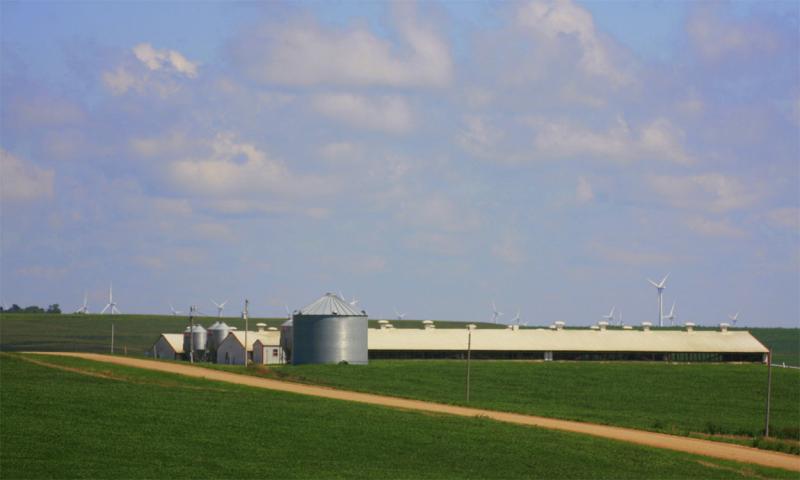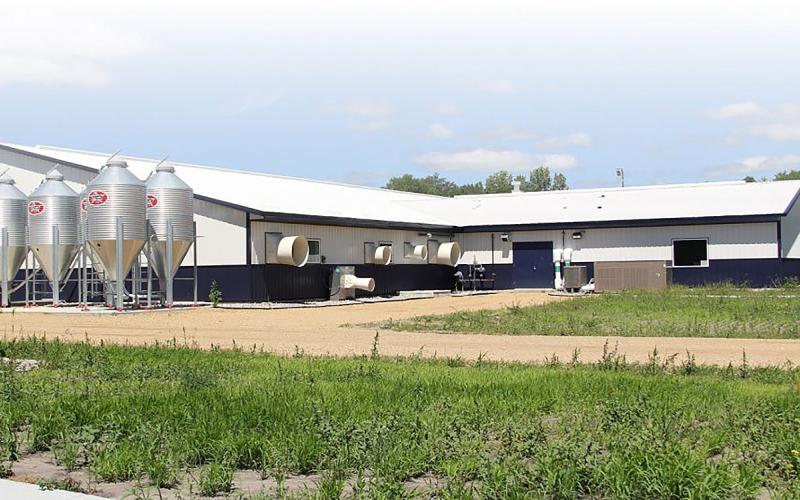
Written by Ryan Samuel, former SDSU Extension Swine Specialist.
While South Dakota is still waiting for green grass and leaves to appear in March, the color associated with St. Patrick’s Day prompted the question, “What is green about pig farming?” The National Pork Board recently quantified and reported that America’s pig farmers reduced their impact on the environment during the period from 1960 to 2015 by using 75% less land, 25% less water, 7% less energy, and producing 8% fewer carbon emissions per pound of pork produced. The full report is available at the Pork Cares website.
The National Pork Board is encouraging individual producers to participate in the creation of their own “Your Farm Sustainability Report.” This report can highlight specific sustainability metrics for your operation, identify on-farm improvements that can improve your bottom line, and provide immediate value in discussions with lenders, suppliers, and the community. Furthermore, the aggregated information will contribute to the overall sustainability picture of the American pork industry. Anyone interested in participating can sign-up at the Pork Checkoff website. Some of the practices that minimize the environmental impact of the swine industry include the following.
Sustainable Pork Production Practices
-
Feed
Pigs are usually fed on soybean meal, corn, and other grains. South Dakota producers incorporate by-products from the food and fuel industries to reduce waste. Nutritionists formulate age-appropriate, well-balanced diets that contribute to efficient growth. -
Housing
Most South Dakota producers house hogs indoors. Practices, such as providing adequate space, proper ventilation, and natural light, help to keep pigs healthy and reduce the environmental impact of pig farming. -
Caretaker Training
The National Pork Board develops caretaker training programs, such as PQA Plus, to provide information about workplace safety, animal well-being, and caring for the environment. The “We Care Ethical Principles” guide pork producers in South Dakota and across the nation to incorporate the latest scientific information into producing safe pork.
-
Efficient Use of Resources
Pig farmers in South Dakota and the nation have reduced their environmental impact by maximizing the use of resources, such as water and energy. These improvements are possible by using water-efficient drinkers, checking water flow at the water nipples, and implementing energy-efficient lighting and ventilation systems. -
Manure Management
Pig manure is a valuable source of nutrients for crops as a replacement for commercial Nitrogen, Phosphorus and Potassium, but it can also be a source of greenhouse gases. South Dakota farmers manage manure storage and land application to simultaneously improve the nutrient value of the manure for crops and reduce odor, minimize the release of harmful gases, stimulate microbial activity and increase carbon storage.
In Summary
Adopting these and other sustainability practices, America’s pig farmers continue to be more environmentally friendly and reduce the overall impact of pork production on the planet. With plenty of snow still on the ground, we will be waiting for the green of spring, but South Dakota hog production is always going to be green.

